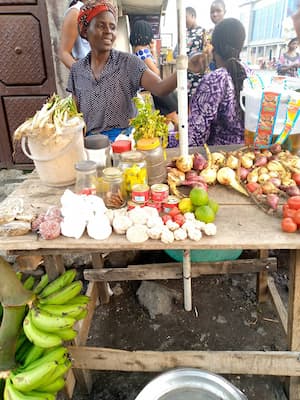Challenges to ending poverty – the global picture
- Covid-19 has caused the first increase in global poverty in decades.
- Covid-19 could add as many as 88-115 million more people to the ranks of the extreme poor by 2021 – pushing back progress by three years (World Bank).
Challenges to ending poverty – local community perspectives
People whose lives were economically precarious were easily overturned by the turbulence of the Covid-19 pandemic and governments’ measures to address it. In India, for example there are 42 million internal migrants. An astonishing percentage of major cities comprises migrants (Ahmedabad: 46 percent; Surat: 64.6 percent; Delhi 42 percent) and they consequently make up over 50 percent of the cities’ workforce. However, when the Government of India declared a national lockdown in March 2020, migrant labourers, who depend upon daily casual jobs, suddenly found themselves jobless overnight.
Grassroots solutions for ending poverty
Stop-gap measures. The Voices from the Frontline stories document very extensive efforts by community members to help each other to simply survive. The typical story involves individuals with relatively more regular, secure wages and/or some savings accumulated who are helping those who are more economically vulnerable, such as those who lost insecure jobs or livelihoods overnight and have no savings at all. Often this may be characterised as lower-income people helping those in abject poverty to ‘get by’, at least as a stop-gap measure.
The Mahila Housing Trust in India, for instance, was already in existence before the pandemic and had formed Community Action Groups of 12-25 women to help the most vulnerable. When the lockdown happened, they identified that migrant labourers were among the most economically and socially vulnerable groups, and they distributed ration packages to them. Some women even used their own wages to buy food, drink and sanitary supplies directly for the migrant labourers.
Local knowledge and documentation. One of the strongest contributions of community groups is their local knowledge and ability to document who is in need and appropriate solutions. For example, the women’s Community Action Groups in India – hearing that some migrant labourers missed receiving official relief packages – compiled a database of especially vulnerable community members and tracked that they were able to receive basic supplies.
In Goma, Democratic Republic of the Congo, the Bureau of Information, Training, Exchanges, and Research for Development (BIFERD) carried out a Knowledge Practices and Attitude Survey to gauge local people’s understanding of the new public health threat and establish how they were coping. The survey revealed that less than 50 percent of the people living in Goma had access to clean water and some 98 percent of households did not have sufficient food when the government imposed a total lockdown. Their data guided BIFERD to mobilise 250 volunteers to “create awareness about the virus, initiate income-generating activities for women and provide small loans in order to support the most impacted communities.”

Barengeke Ngini in Goma, Congo, started a business selling vegetables and fruit to support her family, with USD$100 from local research organisation, the Bureau of Information, Training, Exchanges and Research for Development. © BIFERD
Advocacy capacity and the ability to mobilise broader resources. Almost universally we hear that community groups are taking short-term measures to help those in destitution. Activists recognise the urgent need for government or other actors to step in with longer term solutions.
The Indian Community Action Groups coordinated with local government to identify the most vulnerable people and extend survival rations – but they also made sure to “participate in local governance by creating awareness, coordinating with government officials, and partnering with various stakeholders to ensure service delivery”.
In the slum of Rafiq Nagar in Mumbai, India, community women lobbied their Member of the Legislative Assembly to provide them with money for cooking supplies, so the women could cook meals for the hungry.
The Voices from the Frontline stories provide snapshots in time of how communities were coping with Covid-19 and other risks, rather than longitudinal perspectives. Thus, the stories do not systematically track communities’ progress over time. However, the stories indicate that community groups’ advocacy strategies were succeeding, even in the early days of the pandemic, in mobilising resources from external actors and deploying them where they were needed. For example, the Community Action Groups in India of 12-25 women liaised with government offices to extend free bus and train tickets to help stranded migrant workers to get home.
Many Covid-19-related interventions undertaken by community organisations and NGOs, as well as individuals were in the form of “grants, internal cash resources, cash donations and in-kind contributions from civil society and organs of government, such as donations of food and food ingredients, cleaning supplies and protective equipment (masks) etc. In some instances, distinct and limited Covid-19-related contributions were provided by international partner organisations or affiliated organisations or individuals with existing relationships with local individuals and/or community-based organisations” (Ebrahim for CDKN, forthcoming 2021).
Enabling actions to support and work with community solutions
- Community organisations have access to some of the highest quality and most up-to-date information on who is in a local area and what their needs are. Governments and development partners must support and work with the custodians of this valuable information and local knowledge.
- Both formal and informal community responses to Covid-19 have been made possible by the trust established among individuals at the local level. This suggests that government and development partners should invest in community organising – which builds ‘social capital’ – on an ongoing basis.
- It is important to build the capacity of local actors to advocate for their rights and for improvements in development services from external actors.